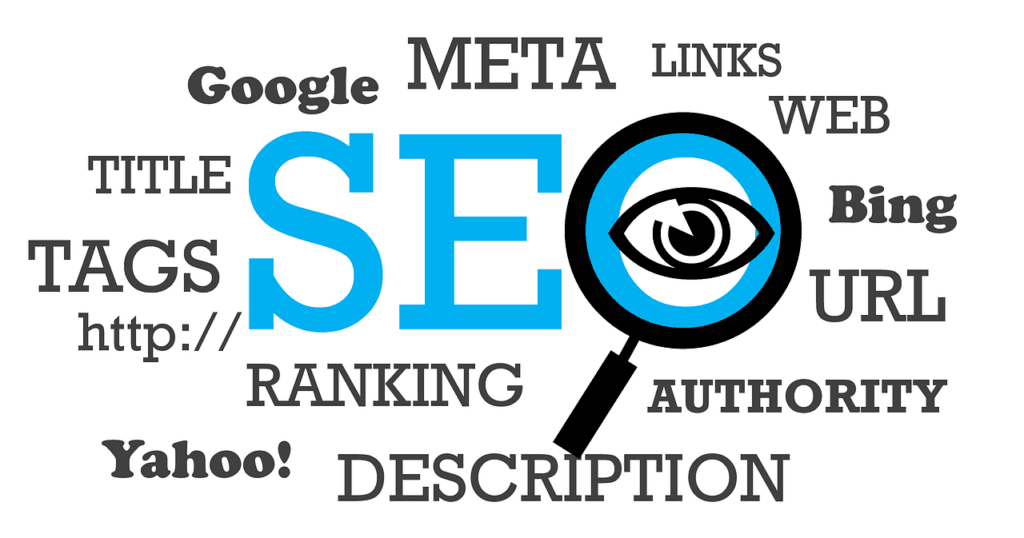The world of SEO is intricate and ever-evolving, with biotech companies facing unique challenges and opportunities in optimizing their online presence. Among the numerous SEO strategies emerging in the forefront, semantic search holds a special place. For companies inundated with complex, multifaceted data, making this information accessible, understandable, and findable is paramount. Here’s where semantic search in biotech SEO shines as a beacon of clarity amidst a sea of complex information.
Unravelling the Complex Web
Biotech firms are tasked with presenting highly technical and sophisticated data to a diverse audience. This audience ranges from fellow scientists and researchers, keen on the intricate details, to the informed public and potential investors looking for simplified, yet accurate, interpretations. The content must be not only rich in information but also easily discoverable and understandable. This blend of accessibility and depth is where semantic search seizes the stage.
Context is King
For biotech companies, where the language is often laden with jargon and complex terminologies, semantic search helps bridge the gap between technical language and user-friendly content. It ensures that when a potential investor types in a query or a student is looking for information for their thesis, the content delivered is tailored, relevant, and contextually rich.
SEO Beyond Keywords
Traditional SEO was primarily focused on keywords – those specific terms and phrases that users would type into search engines. However, with the advent of semantic search, the game has changed. Now, it’s about topics and meanings, contexts, and user intents. It’s about understanding that when someone types “CRISPR technology impacts,” they are looking for a nuanced, detailed exploration of the topic, not just a webpage that has expertly included the keyword multiple times.
Mapping User Intent
Understanding user intent is at the core of semantic search. For biotech companies, this means creating content that not only contains the right keywords but also addresses specific questions and needs of their audience. It involves considering the multiple ways users might phrase their queries and the various angles from which they might approach a topic.
Content that Converses
Creating content that ‘converses’ with the audience is crucial. This entails developing material that answers questions, solves problems, and adds value, moving beyond the provision of information to engagement and interaction. With technologies like Natural Language Processing (NLP), content can be optimized to align with the conversational and contextual nuances of semantic search.
Structured Data – The Unsung Hero
In the realm of semantic SEO, structured data plays an instrumental role. It helps search engines understand the context and content on web pages. For complex biotech content, structured data can categorize and clarify the information, making it easily understandable for search engines and, by extension, users.
Semantic Search and AI
AI’s role in semantic search is pivotal. It helps search engines understand and process natural language queries. For biotech firms, leveraging AI means their content can be easily found and understood, irrespective of the complex terminologies involved. AI interprets user queries and matches them with the most relevant content, factoring in synonyms, context, and user behavior.
The Tailoring of Content
Customizing content for different audience segments is another critical aspect. Every piece of content should be tailored, not just in language and complexity, but in addressing specific needs and questions of diverse audience segments, be it researchers, investors, or the curious public.
The SEO Audit
An SEO audit in the era of semantic search goes beyond checking for keyword optimization and backlinks. It delves into how well the content aligns with user intent, the effectiveness of structured data, and the adaptability of content to meet the dynamic and evolving user queries and expectations.
Strategy Unleashed
Implementing semantic SEO isn’t a one-off task. It’s a meticulous, ongoing process of tuning and tailoring content to ensure it’s not only rich in quality but also in context and relevance. For biotech companies, this can be particularly challenging given the technical nature of the content.
Content Enrichment
Content needs to be enriched with contextual clues that help search engines understand the meaning and relevance of the content. This might involve incorporating related topics and terms, optimizing for synonymous and related keywords, and building a thematic universe around the primary content that signals its context and relevance to search engines.
User Engagement Metrics
The role of user engagement metrics in semantic search is often underestimated. How users interact with content, the time they spend on it, the actions they take, all these are critical signals for search engines in determining the content’s relevance and quality. Biotech firms need to pay heed to these metrics and optimize content to enhance user engagement.
The Power of Visuals
In the biotech sector, where content can be heavily technical and data-driven, visuals play a pivotal role. Infographics, diagrams, and other visual content can make complex information accessible and engaging. But it’s not just about incorporating visuals; it’s also about ensuring these visuals are optimized for search, with relevant tags and metadata that make them discoverable.
The Semantic SEO Toolkit
There are specific tools and technologies that biotech companies can leverage to optimize for semantic search. These tools analyze user queries, track engagement metrics, and provide insights into how content can be optimized for relevance and context. They offer a peek into the search engines’ perception of the content, enabling firms to make informed decisions.
Semantic Markup
Semantic markup is another vital aspect. It involves using specific tags and attributes to give search engines more contextual information about the content. In the complex world of biotech, this can be crucial in ensuring that content is understood and categorized correctly, making it easily discoverable for relevant queries.
Machine Learning and AI
As machine learning and AI continue to evolve, their role in semantic search becomes more pronounced. Biotech firms can leverage these technologies to analyze vast amounts of data, gain insights into user behavior, and tailor content that is not only contextually relevant but also highly personalized.
Customization & Personalization
By analyzing user behavior data, machine learning algorithms can tailor content presentations. Every user interaction becomes a data point that helps refine and personalize the content experience, making it more engaging and relevant.
Visual Transformations
Visual content isn’t just about being aesthetically pleasing; it’s about conveying complex data in an accessible format. Tools powered by AI can automatically transform data into visual content, making it instantly more engaging and shareable, thus improving SEO.
User Insights
As biotech companies grapple with creating content that is both scientifically robust and SEO-friendly, insights from AI can bridge the gap. By analyzing how users interact with content, AI tools can offer actionable insights to make content more user-focused and contextually relevant.
Future Horizon
As we move into an era where search is becoming more intuitive and user-focused, biotech companies face the dual challenge of making their complex, technical content accessible and ensuring it is optimized for search engines that are increasingly focusing on context and user intent. The integration of AI and machine learning, the focus on user engagement metrics, the role of visual content, and the use of tools and technologies that offer insights into content relevance and context are all gears in the intricate machine of semantic SEO.
SEO in the Age of Voice Search
For biotech firms, voice search presents a unique challenge. The technical terms and complex phrases don’t lend themselves easily to voice queries. Here, semantic search can be a savior. By focusing on context and user intent, biotech firms can optimize their content for voice search, making it discoverable for a broader set of queries and phrases.

Related: Check out our free SEO suite

Understanding User Intent in Biotech SEO
As we usher in a more dynamic digital era, understanding user intent becomes pivotal for biotech companies. Traditional SEO practices, while foundational, are getting overshadowed by the need for a more personalized, intent-driven approach to content delivery.
Crafting Content that Resonates
It’s not just about generating traffic; it’s about attracting the right audience. Biotech firms must tailor their content to address specific questions, concerns, and interests of their target demographic. Here, predictive analytics and AI-powered tools come into play, offering insights into user behavior, search patterns, and content consumption trends.
Integrating Conversational AI
As voice search and conversational AI gain traction, there’s an escalating need for content that caters to natural language queries. For biotech firms, this means simplifying complex jargon and creating content that is both informative and accessible. AI chatbots and virtual assistants can offer real-time responses to queries, enhancing user engagement and SEO performance.
Mobile SEO: A Non-Negotiable Asset
Adaptation to Mobile Interfaces
The proliferation of smartphones has made mobile SEO a non-negotiable asset for biotech companies. A responsive, mobile-optimized website is not a luxury but a necessity. Google’s mobile-first indexing underscores the importance of a mobile-friendly interface for improved search rankings.
Accelerated Mobile Pages (AMPs)
AMPs are redefining the mobile content experience, offering users fast-loading, streamlined content that is optimized for mobile viewing. Biotech firms should explore AMPs to enhance mobile user engagement, reduce bounce rates, and improve SEO performance.
The Power of Video Content in Biotech SEO
Engaging Visual Narratives
The intricate, detailed nature of biotech content can sometimes be overwhelming for readers. Here, video content emerges as a powerful tool, offering visual, engaging narratives that make complex information accessible and understandable.
SEO Benefits of Video
Video content is not just engaging but is also favored by search engines. Optimized video content can enhance a website’s search visibility, drive organic traffic, and boost user engagement metrics.
The Rise of E-A-T in Biotech SEO
Expertise, Authoritativeness, Trustworthiness
Google’s focus on Expertise, Authoritativeness, and Trustworthiness (E-A-T) has significant implications for biotech SEO. Content must not just be well-researched and accurate but should also be created and reviewed by experts in the field.
Building Authority through Quality Content
Quality backlinks, citations, and a strong reputation are critical in building authority. Biotech firms must focus on generating high-quality, credible content that earns recognition and endorsement from peers and authorities in the field.
Conclusion
As the digital landscape evolves, so does the art and science of SEO. For biotech companies, staying abreast of emerging trends, technologies, and user behavior patterns is critical. The focus should shift from traditional keyword-centric SEO to a more holistic, user-intent focused approach.
By integrating advanced technologies like AI and machine learning, prioritizing mobile SEO, exploring the power of video content, and focusing on E-A-T principles, biotech companies can not just survive but thrive in this dynamic digital ecosystem.
READ NEXT:
- Recent Trends in Mergers and Acquisitions in India (2023)
- How to Utilize Dynamic Content in Email Campaigns
- How Mobile SEO Impacts Biotech Websites
- SEO vs. PPC: Which Brings in More Traffic and Leads?
- Aligning Startup SEO Budget with Business Objectives



















Comments are closed.